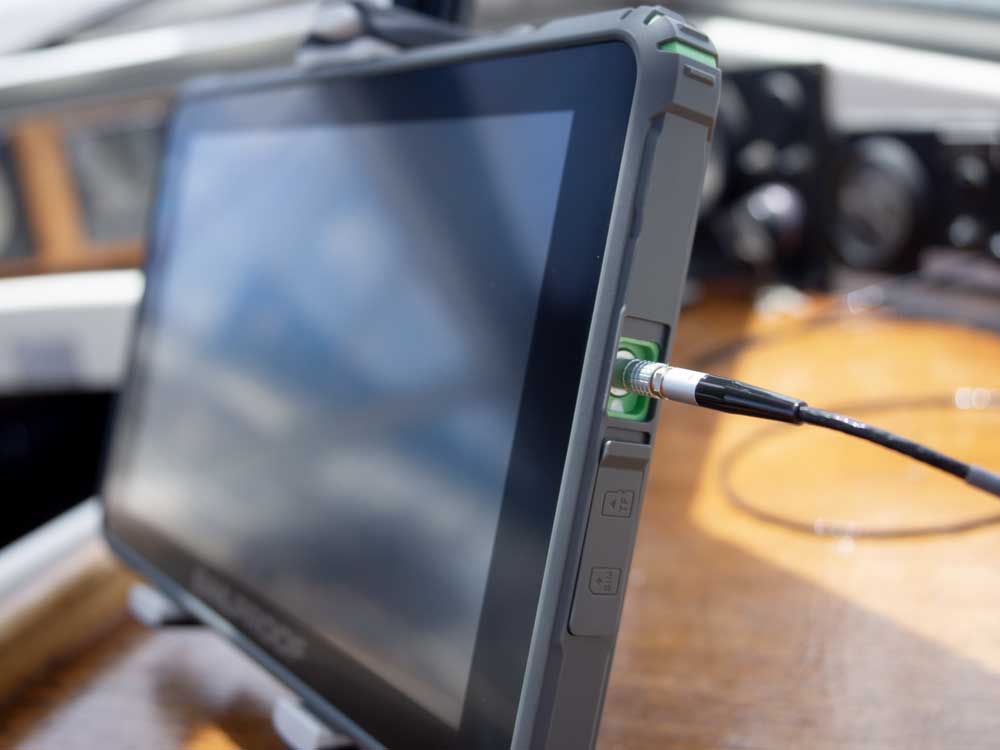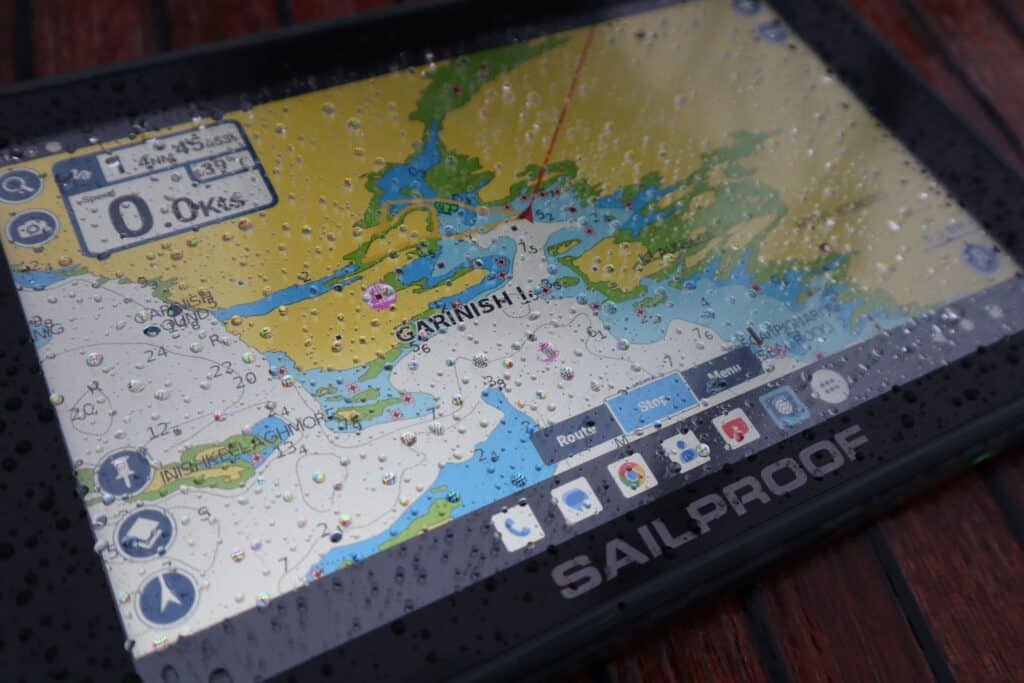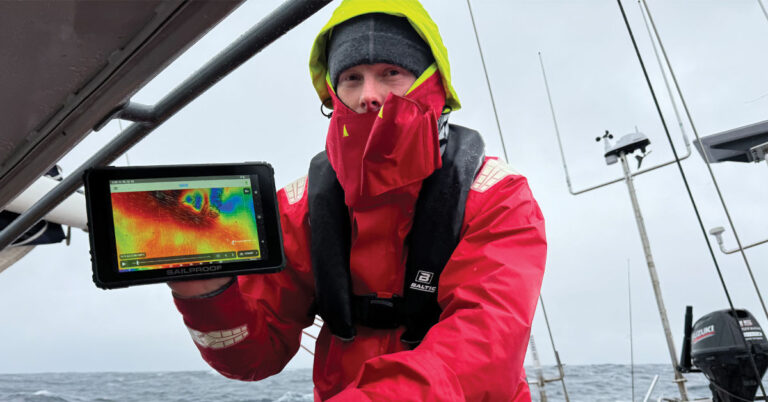In sailing, durability and reliability are key factors that skippers and sailors seek in their tools, especially in devices used in everyday duties and challenging environments. Our SailProof tablet, known for its robust design and reliable performance, stands out thanks to its IP67 certification. But what exactly does IP67 mean, and why is it so important for your tablet? This guide aims to provide all the essential information about the IP67 certification, its significance, and how it is one of the major features of the SailProof tablet.
Understanding IP67 Certification
IP67 is a rating defined by the International Electrotechnical Commission (IEC) under the international standard IEC 60529. The “IP” in IP67 stands for “Ingress Protection” and is used to define the levels of sealing effectiveness of electrical enclosures against dirt, dust and moisture.
The numbers following “IP” indicate the degree of protection:
– 6: The first digit indicates the level of protection against solid objects, 6 being the highest, signifying complete protection against dust ingress.
– 7: The second digit denotes the level of protection against liquids, with 7 meaning the device can withstand immersion in water up to 1 meter for 30 minutes.
Why IP67 Matters for the SailProof Tablet
The IP67 certification ensures that the SailProof tablet is both dust-tight and water-resistant, making it an ideal device for your boat life. Whether navigating rough seas, keeping it in a humid environment (which is usually the case in a boat), or simply wanting a durable tablet for everyday use, the IP67 rating guarantees that the SailProof tablet can easily handle these conditions. That’s why with the aim of continuous improvement, our new SP08X and SP10X models now include the option of waterproof charger (9/36 v) that allows you to charge them while using them outdoor.
But to keep it clear, we would love to make a list of the benefits of IP67 for SailProof tablet users:
- Reliability and Longevity: The enhanced protection provided by the IP67 certification means the SailProof tablet is likely to have a longer lifespan compared to non-certified devices. This reliability is crucial for clients who appreciate quality. This is not a device you will have to change every season. SailProof tablets are made to keep sailing as long as you do.
- Durability in Harsh Environments: The SailProof tablet’s IP67 rating means it is built to withstand extreme conditions. For sailors, this is particularly crucial as the marine environment can be harsh with exposure to saltwater, wind, and rain. But be aware with those elements, when the tablet gets wet with salt or chlorinated water, it is recommended to carefully rinse it with tap water and then dry it completely with a clean, soft cloth. Always make sure that the port and connector protections are in place.
- Protection Against Dust: Dust can be a significant issue for electronic devices, potentially causing internal damage or reducing performance. The SailProof tablet’s complete protection against dust ingress ensures it remains functional in sandy or dusty environments.
- Water Resistance: With an IP67 rating, the SailProof Tablet can survive accidental drops into water and can be used in wet conditions without any damage. This feature is particularly useful for those working in or around water. Therefore, you don’t have to worry if your hands are still wet or if you are using it in a rainy or soaked environment, it still works without any issue.

The new SailProof X models offer an optional IP67 waterproof charging port, allowing you to confidently charge your tablet onboard while navigating your journeys. Be careful not to completely immerse the device, or expose it to seawater, salt water, chlorinated water or liquids such as drinks. (c) SailProof
How IP67 Enhances Our SailProof Tablets
The IP67 certification is not just a badge of honor; it signifies rigorous testing andengineering to ensure the SailProof tablet meets high standards of durability andprotection. To achieve this certification, the SailProof tablet features sealed enclosuresthat prevent dust and water from entering, with gaskets and seals aroundkey areas such as ports, buttons, and seams. The materials arehigh-quality plastics, metals, and coatings employed to create a rugged device capable ofwithstanding harsh conditions.
From the inside out, the IP67 rating makes the SailProof tablet perfect for a variety of marine environments, offering peace of mind and versatility. Indeed, knowing that your tablet is protected against the elements reassures you while navigating, allowing you to focus on your sailing tasks without worrying about potential damage from splashes, rain, or accidental drops into the water. The durability and reliability of the IP67 certified SailProof tablet mean fewer repairs and replacements, saving you money in the long run. Investing in a device with an IP67 rating means choosing a product designed to last, providing the confidence necessary to tackle any marine environment head-on.
Whether you’re charting a course through stormy seas, anchoring in a dusty harbor, or exploring remote coastlines, the SailProof tablet’s IP67 rating ensures it can handle the challenges you face. Understanding the significance of this certification helps you appreciate the engineering behind the SailProof tablet and why we say, “made for sailors by sailors”, making it a trusted companion on your maritime journeys.






